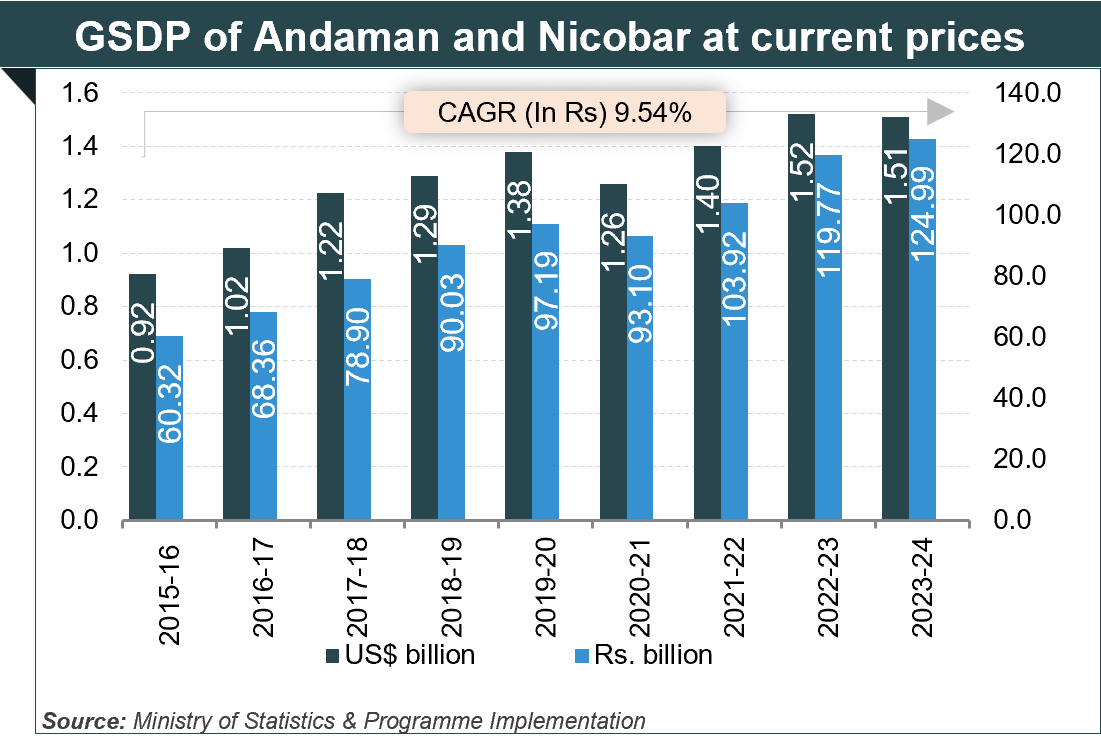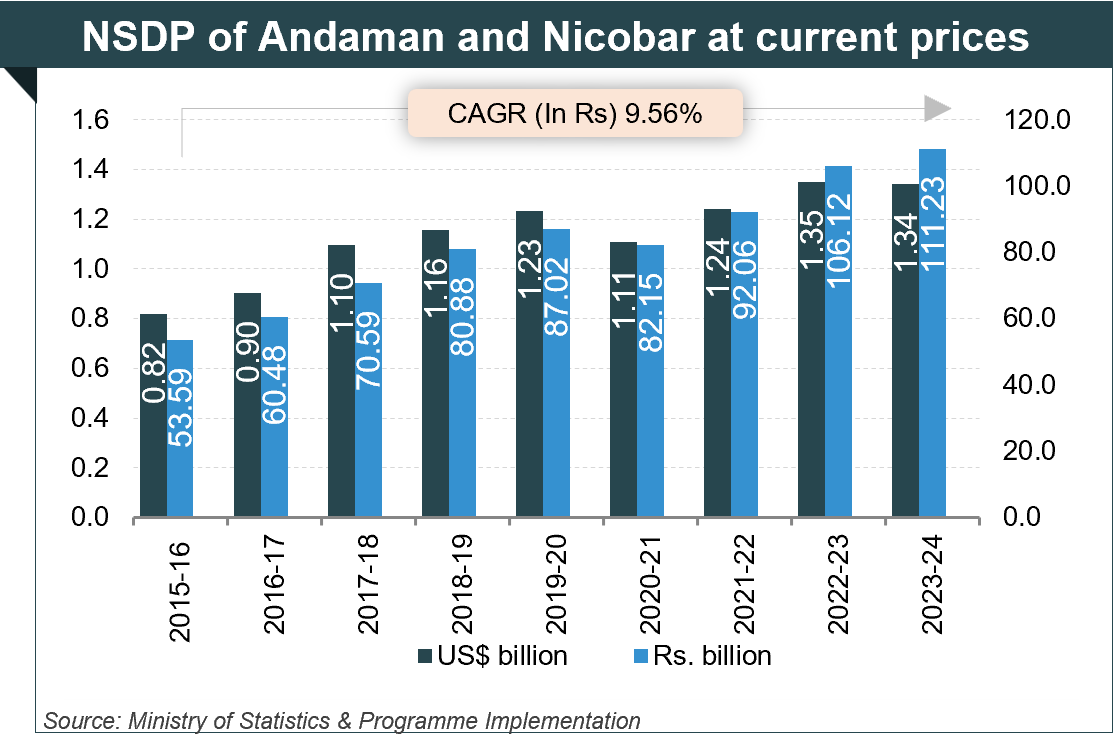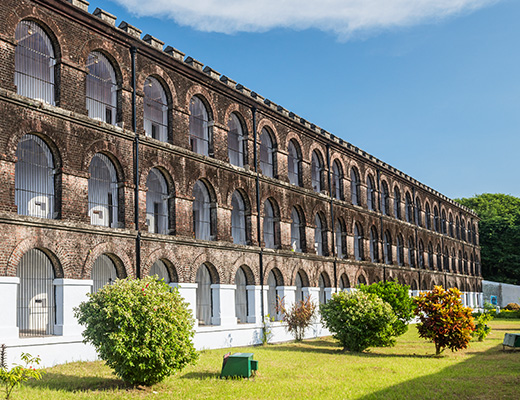Andaman and Nicobar
The long coastline of 1,962 km offers tremendous opportunities for investment in India's marine industries and cruise tourism.


Introduction

Andaman & Nicobar is an important hub for the economic strategic cooperation of India. The role of Andaman & Nicobar in India's strong ties with East Asian countries and other sea-related countries is very critical under the Act-East Policy and this is likely to grow. To improve the development of projects in the UT, the Island Development Agency was created eight years ago.
Submarine Cable will assist Andaman & Nicobar in providing cheaper and better connectivity and Digital India's advantages, especially in improving online education, telemedicine, banking, online trading and tourism.
A mega International Container Transshipment Port was going to be set up at the Galathea Bay of Great Nicobar Island. The first phase is targeted for completion in 2028 at a handling capacity of 4 million Twenty-Foot Equivalent Units.
Development of a deep internal port draught and proposal to build a trans-shipment port in Great Nicobar at an estimated cost of approximately Rs. 100 billion (US$ 1.36 billion) will enable large ships, along with new employment opportunities, to anchor and increase India's share in maritime trade.
The island's blue economy such as fisheries, aquaculture, and seaweed farming will accelerate in line with the growth of modern infrastructure in Andaman & Nicobar.
The operations of the new terminal building of the Port Blair Airport commenced in August 2023.
In FY25, the total merchandise exports from the union territory stood at Rs. 9 crore (US$ 1.05 million).
In FY25, the UT exported key items such as marine products which contributed 84.76% to the total exports in the UT.
In FY26 (as on August 2025), Andaman and Nicobar had a total installed power generation capacity of 129.28 MW, comprising 92.71 MW from thermal and 36.57 MW from renewable energy sources (RES).
From the total installed power generation capacity, the UT’S utilities sector was the largest contributor with a capacity of 62.77 MW, followed by 61.51 MW from the private sector, and 5 MW from central utilities.
In 2024, the Andaman and Nicobar Islands recorded 7,10,397 domestic and 11,497 foreign tourist arrivals, marking a 37% rise in domestic visitors. The UT witnessed a 37% rise to over 323,000 in 2023 and then more than doubled to 710,000 in 2024.
In FY26 (until August 2025), Port Blair Airport recorded 3,178.4 metric tons in freight, along with 540,003 passengers and 4,798 aircraft movements.
In 2024-25, Port Blair Airport in Andaman and Nicobar recorded 7,905.1 metric tonnes in freight, along with 1,656,704 passengers, and 11,566 aircraft movements.
12 Andaman and Nicobar Islands were chosen for high-impact projects, with a focus on improving the region's trade in sea-based, organic and coconut-based products. In September 2020, government think-tank Niti Aayog started the process of hiring consultants to prepare a master plan for the holistic development of the Great Nicobar Islands through the public–private partnership model.
The Indian government has set targets for Andaman and Nicobar to attain its energy needs through 100% renewable energy.
Key Sectors
- The island's blue economy such as fisheries, aquaculture and seaweed farming will accelerate in line with the growth of modern infrastructure in Andaman & Nicobar.
- According to the Telecom Regulatory Authority of India (TRAI), Andaman and Nicobar had 0.50 million wireless subscribers and 0.04 million wireline subscribers, as of March 2025.
- Tele-density in the UT stood at 132.04%, as of March 2025.
- In December 2022, India and Indonesia held a meeting on the development of connectivity between Andaman and Nicobar Island and Aceh Province.
- In March 2022, the Japan International Cooperation Agency (JICA) and the Government of India signed a grant for a power supply project in the Andaman and Nicobar Islands worth Rs. 250 crore (US$ 32.54 million).
- In 2022-23, the fish production in Andaman and Nicobar stood at 46.99 thousand tonnes.
- In 2021-22, the UT produced 131.73 million tonnes of coconut under an area of 17,903.8 hectares.
- In 2024, the domestic tourists in the UT were 7,10,397 and foreign were 11,497 in number.
- Four tourism-based projects have been initiated in Andaman & Nicobar for implementation through the Public-Private Partnership (PPP) model to attract investment and technical & management expertise from the private sector.
- Andaman & Nicobar Islands are a strategically important Union Territory under India’s Act East Policy, serving as a key maritime and economic link with East and Southeast Asia. Ongoing investments in digital connectivity, ports, airports and renewable energy are strengthening trade, tourism and the blue economy, including fisheries, aquaculture and seaweed farming. Flagship projects such as the proposed international transshipment port at Great Nicobar, expansion of Port Blair Airport and 100% renewable energy targets are enhancing logistics and sustainability. Supported by rising tourist inflows, improving connectivity and focused PPP-led development, the islands are emerging as a critical hub for maritime trade, tourism and strategic cooperation.




